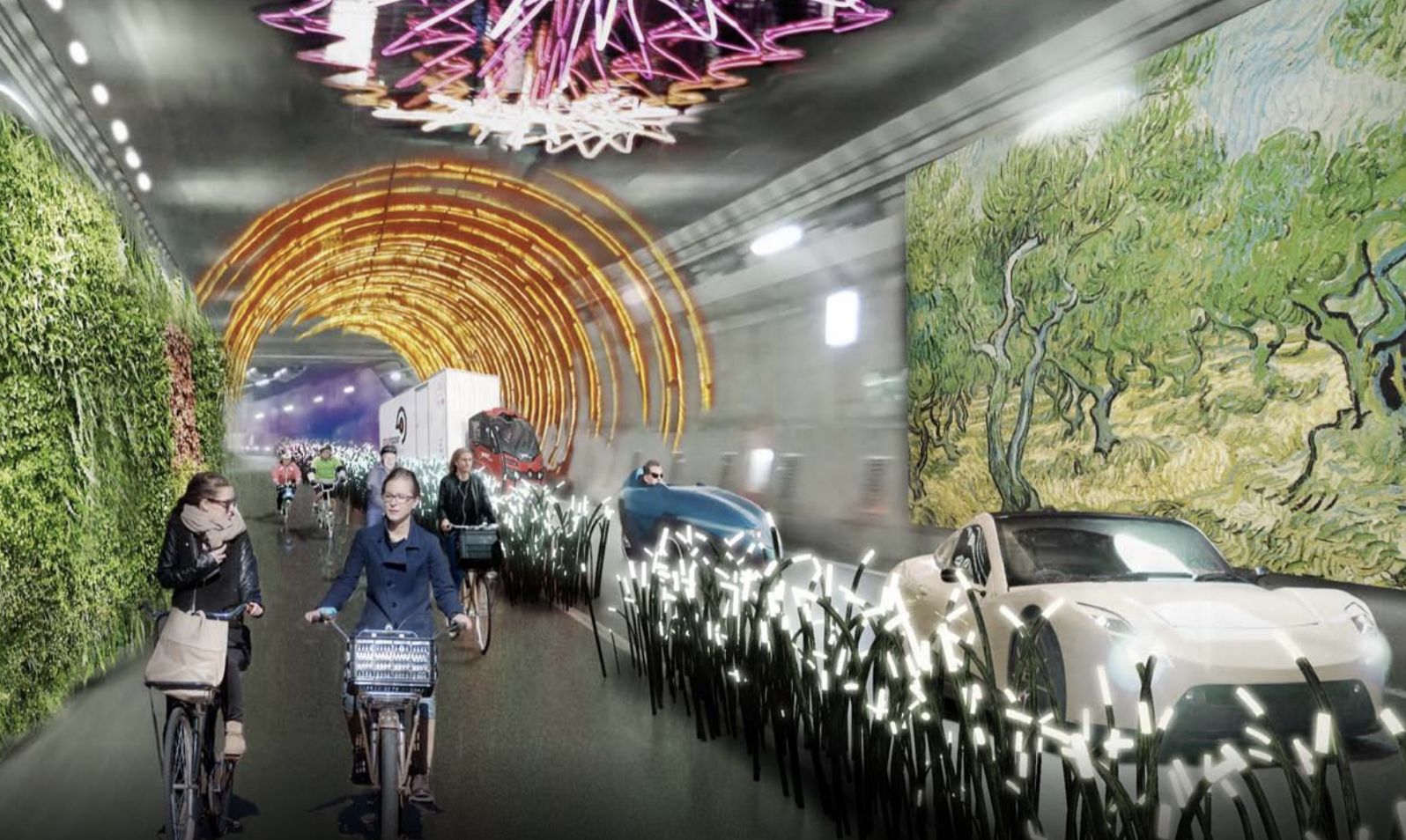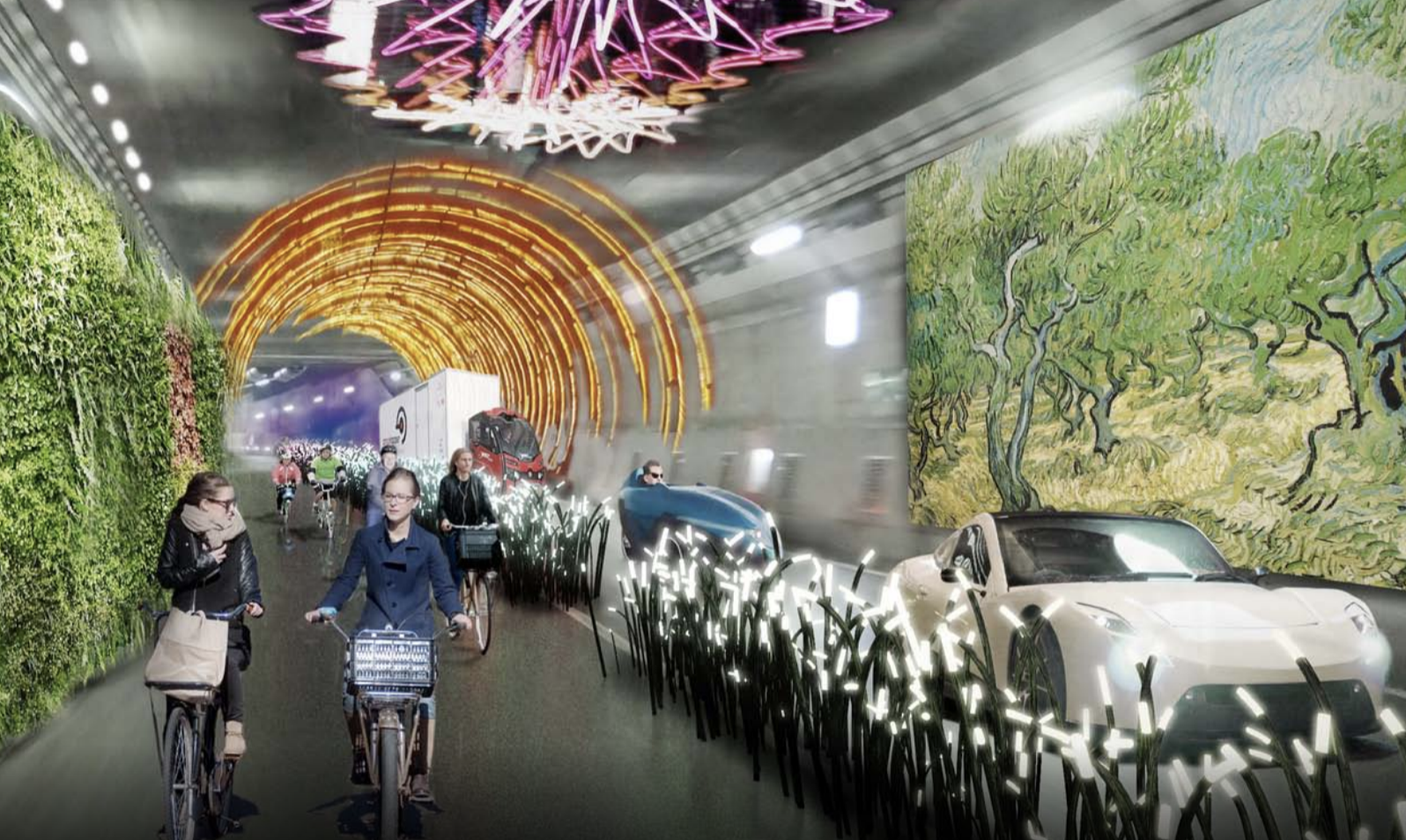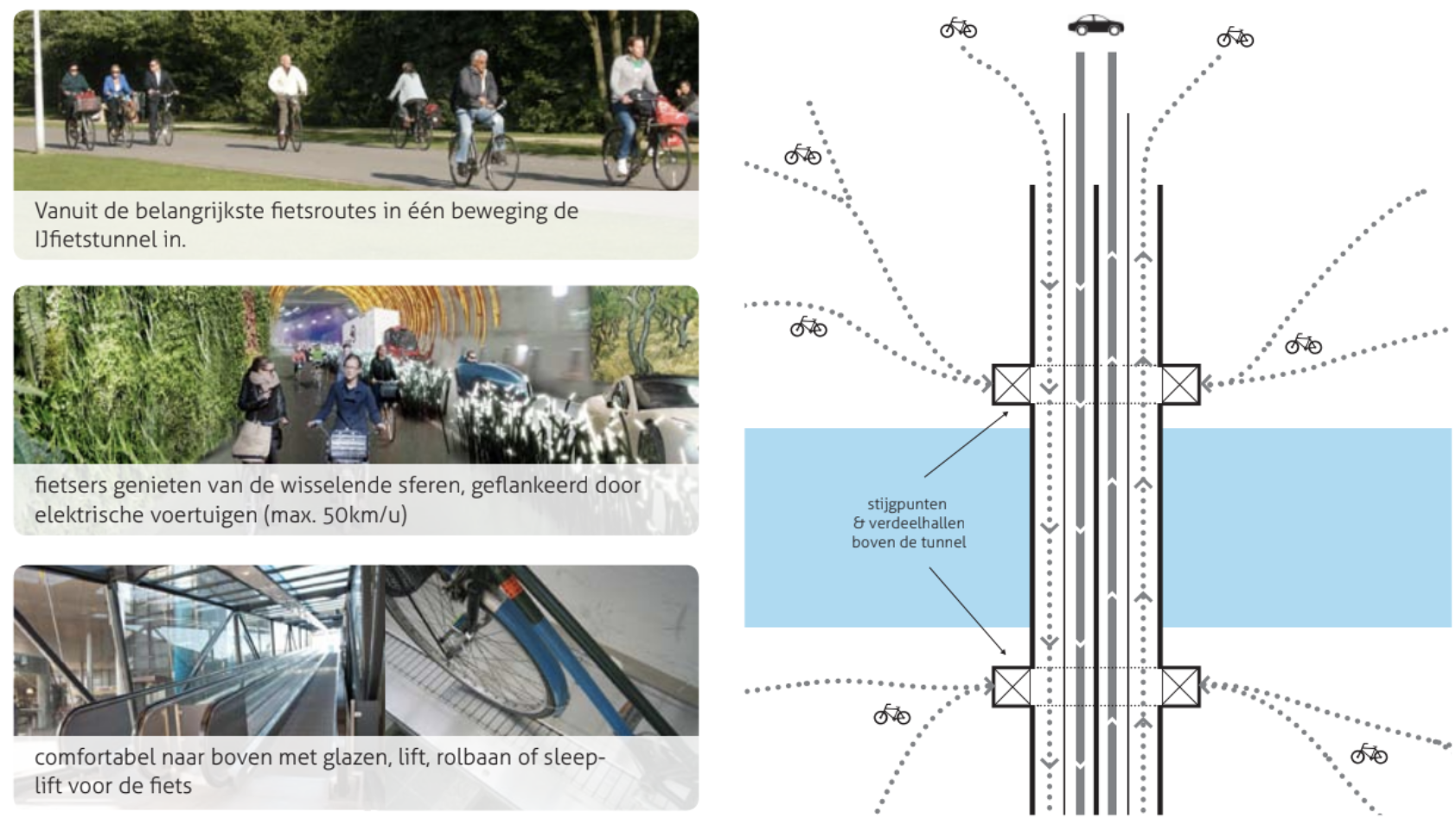
Amsterdam Bike Tunnel (IJfietstunnel)
Fast, comfortable and dry on your bike to North
Jan 29, 2015
The IJfietstunnel project presents an alternative bicycle route between the center of Amsterdam and the north, currently serviced by overcrowded ferries. Plans for expensive bridges, new tunnels, and cable cars for cyclers are consistently proposed. However, converting the existing IJtunnel could provide a shared space and a relatively simple and affordable solution to benefit commuters and the city.

New connections across the IJ, such as the Oostveer, have been successful since their opening. Amsterdam-Noord is developing rapidly. Thousands of homes (and all the associated facilities) are still being built along the northern banks of the IJ. Although increasing ferries is not a structural solution, a bridge is comparatively more difficult and expensive. A quick solution is crucial for bicycle traffic but also the air quality of the city.
The ferry is convenient and attractive but can hardly cope with the demand. Plans exist for a new metro line in two years. Unfortunately, Amsterdam's most popular means of transport - the bicycle - cannot be used to go there. A bicycle bridge or cable car would offer a somewhat iconic solution to this problem. But how would these large constructions connect to the historic city center? Conversely, a cycling route under the IJ- could this be the perfect solution? Cheaper, comfortable, and reliable and can be realized faster.
We propose an IJtunnel that processes less car traffic and thus offers space for bicycles. Car traffic through the IJtunnel has been declining for years. The Noordzuidlijn will open in two years, removing the need for intensive bus traffic between Noord and Central Station. This link creates space to concentrate car traffic in one tunnel section and open the other for bicycles.

Using existing infrastructure is cheaper and quicker than building a new tunnel, bridge, or cablecar. It is also dry, comfortable, and reliable. It is also not uncommon: for instance, in the Alps, two-directional travel in a single tunnel is standard in the European Alps. An alternative solution is to give cyclists the right lane and cars the left. From the perspective of comfort, health, and safety, we propose that only electric vehicles may be allowed to drive through the IJtunnel in such a solution.
Cyclists are much more agile than cars. To provide better access to both the North-side and places like the naval area, we are installing extra openings in the tunnel. These new entrances would provide a perfect connection to the main bicycle routes and bring activity to places that will become increasingly important in the city in the upcoming years. It also makes ascending and descending easier for people who do not like cycling up the slope.

The IJfietstunnel is not just any tunnel. Cycling, walking, or running through it is an experience you will not forget easily - no long pipeline or concrete and fluorescent tube lighting, rather a world of variety. Dynamic LED lighting, vegetation, changing exhibits, and music create a variety of atmospheres that make the ride under the water different every day. It will be an international showcase for underground interior architecture. The 'IJpassage' is a gateway to the north - the Rijkspassage is a way to access the South.
The IJfietstunnel is an initiative of Stadsstromen and Except Integrated Sustainability. Both companies are actively committed to creating a sustainable city. The reuse of existing infrastructure and the promotion of bicycles both support this mission. Thus the two companies are joining forces to realize the IJfietstunnel together.
Jan. 29, 2015